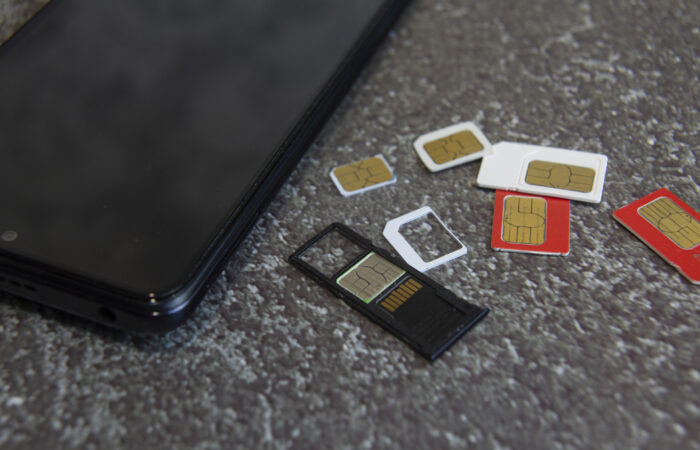(Please also read our Avoid Crypto Recovery Scams – Step-by-Step Guide.)
To safeguard yourself from falling victim to crypto recovery scams, it’s crucial to be aware of the crypto recovery lies and deceptive tactics employed by scammers. In this guide, we will dissect several actual statements made by these scammers, debunking their falsehoods and shedding light on their fraudulent practices. By understanding these crypto recovery lies, you can better protect yourself from the clutches of fake “crypto recovery” services.
Crypto Recovery Lies: “We are associated with Crypto Investigators / Cryptosec / Chainalysis / Ciphertrace / Other reputable crypto investigations firm”
Explanation: Scammers often impersonate reputable firms, mimicking logos and using similar email domains. If approached randomly with crypto recovery offers, don’t trust blindly. Always verify by contacting the claimed firm directly through their official website’s email.
Crypto Recovery Lies: “We have insider connections with cryptocurrency exchanges and can recover your funds.”
Explanation: Legitimate cryptocurrency exchanges prioritize the privacy and security of their users. No reputable exchange would disclose sensitive information or collaborate with anyone without proper legal procedures. Scammers prey on victims’ desperation by falsely claiming exclusive access to insider information, which is simply a lie.
Crypto Recovery Lies: “We can reverse or cancel transactions to recover your funds.”
Explanation: Once a transaction is confirmed on the blockchain, it becomes immutable and cannot be reversed or canceled. Scammers falsely claim to possess the ability to reverse transactions, but this is impossible and a clear indication of a scam.
Crypto Recovery Lies: “We require your private keys or login credentials to initiate the recovery process.”
Explanation: Your private keys and login credentials are the keys to your digital assets. Reputable recovery services never ask for this sensitive information. Scammers, on the other hand, exploit victims’ lack of knowledge by requesting access to their wallets under the guise of assisting with the recovery. Sharing such information can lead to immediate and irreparable loss of your funds.
Crypto Recovery Lies: “We will perform DDoS attack on the scammer’s wallet. This will enable the recovery.”
Explanation: Scammers use technical jargon to confuse victims. Distributed denial-of-service (DDoS) attacks cannot be performed on individual wallets, and even if they could, they would not enable recovery of funds. This statement is meant to mislead victims.
Crypto Recovery Lies: “DDoS activity requires lots of gas. So even though we do not charge fees until after the recovery, you will have to pay $2000 for the gas fees to operate the tool.”
Explanation: See above. Gas fees are required for transactions on the blockchain, but scammers exploit this concept to deceive victims into paying exorbitant amounts. Legitimate gas fees are calculated in cents, not in thousands of dollars. Legitimate recovery services do not charge such high fees, and recovery tools mentioned by scammers do not exist.
Crypto Recovery Lies: “We can recover stolen assets through smart contract programming. $1,500 is to serve as the gas fee to deploy the smart contract code for the coin recovery to your wallet.”
Explanation: Stolen crypto assets cannot be recovered through “smart contract programming”. Smart contracts likely could not be deployed to the victim’s wallet. Even if it would be possible, the gas fees would under no circumstance be this high. This is another example of using technobabble to confuse their victims.
Crypto Recovery Lies: “You have to purchase crypto on Crypto.com which is a legitimate site. After that you will have to send the crypto to Coinbase, another well-known legitimate site. After that you will be able to recover your stolen crypto.”
Explanation: This is nonsense. Purchasing more crypto and sending it to Coinbase or any other legitimate exchange in no way facilitates recovery of stolen crypto. Scammers are trying to give their victims false sense of security by referring to well-known legitimate sites. However, they are controlling the wallet / account receiving the crypto and will transfer the crypto out the moment they receive it and steal it.
Crypto Recovery Lies: “You need to pay proxy wallet fees. We have to pay proxy wallet providers to swap tokens which would then not counted in your unauthorized withdrawal fees. That way your wallet wouldn’t get permanently suspended.”
Explanation: This statement is nonsensical and serves to confuse victims. Even if we give them lots of benefit of the doubt and try to translate this into some comprehensible statement, none of it would aid a recovery in any way whatsoever.
Crypto Recovery Lies: “We have to move quickly because we can see that the scammer is preparing to move the funds into a hardware wallet, and then the recovery would be impossible.”
Explanation: Scammers often employ urgency (with various excuses) to pressure victims into acting hastily without conducting proper research. Always be on a lookout for such pressure tactics. Besides that red flag, there are other nonsenses in the above statement. There is no technical way to see what one intents to do and whether they plan to move funds to a hardware wallet.
Crypto Recovery Lies: “We can recover the funds by performing a side channel bummer oracle attack which combined with a smart programming DDoS and with the help of a miner can help you recover your funds.”
Explanation: This statement is complete nonsense and meant to deceive victims. There is no such thing as a “side channel bummer oracle attack” or a “smart programming DDoS.” A miner cannot assist in recovering funds. It’s a fabrication aimed at gaining victims’ trust.
Crypto Recovery Lies: “You can deposit $500 to spiderfoot which will link your wallet to the scammers and you can then retrieve your stolen fund together with your deposit.”
Explanation: This is another nonsensical statement that has no relation with reality. There is no tool that would allow your wallet to “link” with scammer’s wallet and that way retrieve the funds.
Crypto Recovery Lies: “Our team of experts will be using the Complete Routine Server (CRS) which charges gas fee to deploy smart contract code and it should recover all your assets.”
Explanation: The “Complete Routine Server” does not exist, and scammers use this term as technobabble to deceive victims. There is no tool or server that can magically recover funds from a scammer’s wallet. Claims like these are pure fiction. Finally, gas fees, in the instances where they are used, are measured in cents and not in thousands of dollars.
Crypto Recovery Lies: “Our Dark Web Hacker can recover your funds. But the approach is confidential.”
Explanation: Legitimate recovery services do not use “Dark Web Hackers” and are always able to to explain every aspect the process to their clients in a clear, understandable, and simple way.
Crypto Recovery Lies: “First I will have to develop a website and program a smart contract DAO which will use algorithmic stablecoins to freeze the funds in the scammer’s wallet…”
Explanation: None of these terms have any relations to crypto recovery. Like many other examples here, this is a pure technobable used only to confuse their victim.
Crypto Recovery Lies: “We have 100% success in mounting 51% attack to recover stolen funds.”
Explanation: One of the biggest red flags in any interactions with crypto recovery services is a “100% success rate” statement. Anyone who claims 100% success rate or offers guarantees is certainly a scammer. 51% is an actual theoretical attack in which an attacker that could control half the computer power or mining hash rate on a network could change the blockchain ledger. However, such an attack is not feasible. At the time of the scammer interaction in question and considering that the lost crypto was Bitcoin, a back-of-the-napkin calculation tells us that the attack would cost over $10B in hardware and energy costs even if those resources could be easily obtained.
Crypto Recovery Lies: “Our BEP-32 compliant AMO can quickly change the Bollinger bands allowing us to reverse the transaction if we time it correctly.”
Explanation: Concentrated Nonsense. Multiple technical terms that combined in this way don’t mean anything and have no relation to crypto recovery. Like numerous other examples, this is a BS used to confuse the victims and impress them with technical “knowledge”. BEP-32 is likely a made up term based on “BEP – Binance Smart Chain Evolution Proposal”, an actual term in BNB Smart Chain. AMO often refers to Algorithmic Market Operations that automatically control the supply of algorithmic stablecoins. Bollinger bands are a type of statistical chart used in investment technical analysis and representing the prices and volatility over time of a financial instrument or commodity.
Crypto Recovery Lies: “We already recovered all your stolen funds. Once you pay us the fee, we will release details of the wallet with your funds.”
Explanation: Sometimes the scammers might even show you a doctored photo of the wallet with recovered funds, or even have them shown in their fake crypto exchange website. In any case, this is just another variation of asking for a commission/fee payment in advance, which is always a red flag.
Crypto Recovery Lies: “We will deposit your recovered funds into the exchange ABC that we trust. Before we do that, you need to purchase 3 ETH in order to establish a deposit history with the exchange. Nothing to worry because you are only depositing it to your wallet and you are fully in control.”
Explanation: Scammers use their own fake exchange websites for various scams, from pig-butchering to crypto recovery scams. In this deceptive scenario, the victim would receive login details to a seemingly authentic hot wallet on the scammer’s counterfeit cryptocurrency exchange site. To the unsuspecting victim, it may appear as though they maintain control over their wallet and funds. In truth, the scammers retain all the deposited funds, and the wallet balance displayed is fraudulent. Consequently, a victim can never withdraw these fictitious crypto balances.
Crypto Recovery Lies: “You will only pay us our fee once we deposit all of your recovered funds into your wallet we will create for you at a specific exchange.”
Explanation: This one is hard to detect early on because the scammers are saying the right thing. The red flag here lies in the choice of the wallet where the so-called “recovery experts” propose to deposit the recovered funds. A genuine service would comfortably deposit recovered funds into a wallet provided by you. Conversely, a scammer would insist on depositing the recovered crypto into a specific crypto exchange under the pretense of trusted security measures. This crypto exchange would be a fabricated platform developed by the scammers. The recovered amounts displayed to the victim would be fictitious. While the wallet would appear to be frozen until the “exchange performs KYC checks,” the fraudsters would insist on immediate payment from a different client’s wallet.
Crypto Recovery Lies: “We are endorsed or recommended by government authorities.”
Explanation: Scammers may claim to have official endorsements or recommendations from government authorities, regulatory bodies, or law enforcement agencies to gain victims’ trust. However, government agencies typically do not endorse or recommend specific recovery services.
Crypto Recovery Lies: “We have a secret software or algorithm that can trace and recover funds.”
Explanation: Scammers may assert that they possess a proprietary software or algorithm that can trace and recover lost funds with remarkable accuracy. In reality, tracking and recovering funds is a complex process that often requires legal procedures and the involvement of law enforcement authorities. Beware of claims that rely solely on the existence of secret tools or software.
Crypto Recovery Lies: “We have to purchase a Dark Web tool to recover funds.”
Explanation: Se above. This statement, similar to others mentioned above, is fabricated. Scammers attempt to create an illusion of sophistication by referencing the Dark Web.
By being aware of the lies and deceptive tactics employed by fake “crypto recovery” services, you can protect yourself from falling victim to their scams. Remember, genuine recovery services prioritize transparency, adhere to legal frameworks, and do not make unrealistic promises. Stay informed, conduct thorough research, and seek advice from trusted sources.
To learn how we and other legitimate crypto investigation and recovery services operate see: How Legitimate Crypto Recovery Services Operate. For more information on how to proactively protect yourself, see Cryptosec.







 Beware of crypto recovery scammers! Learn
Beware of crypto recovery scammers! Learn